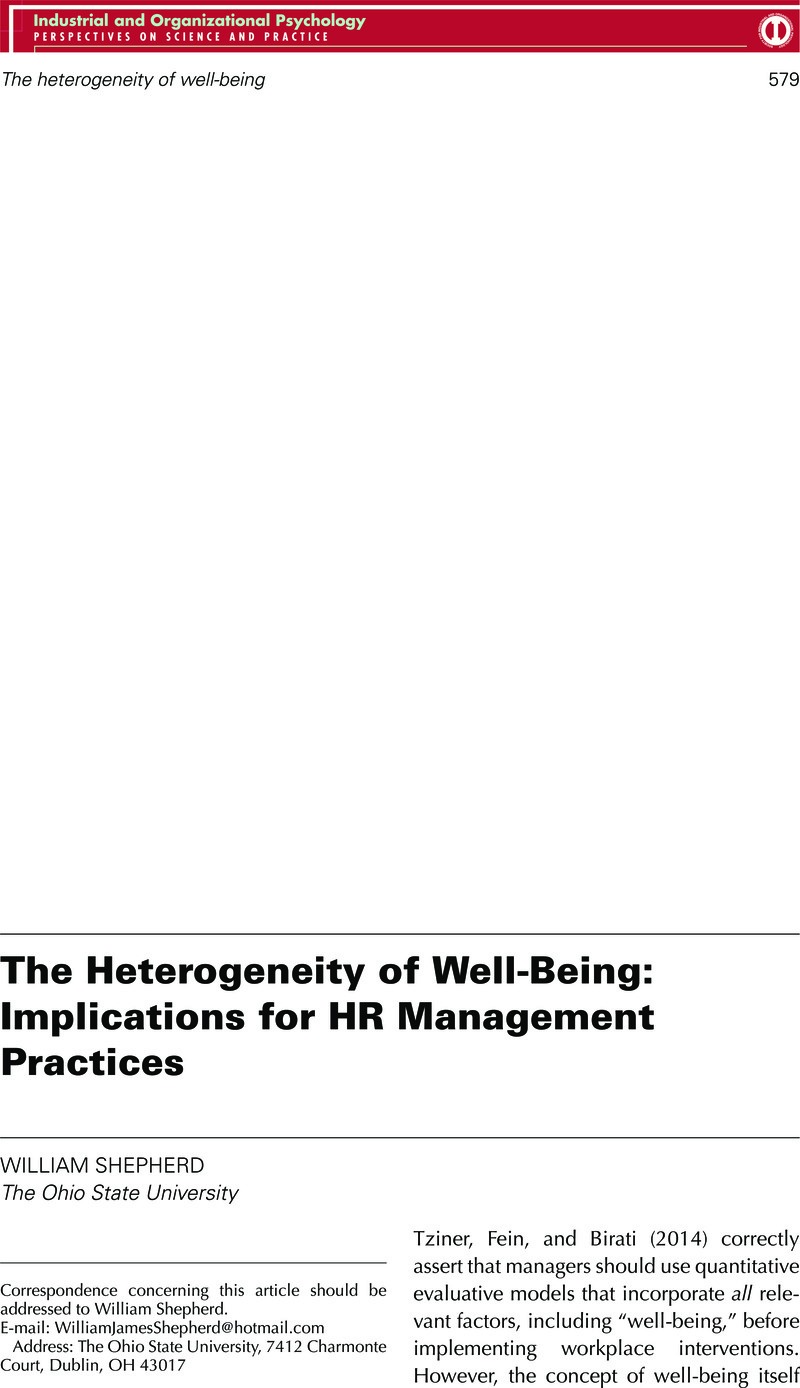No CrossRef data available.
Article contents
The Heterogeneity of Well-Being: Implications for HR Management Practices
Published online by Cambridge University Press: 10 April 2015
Abstract
An abstract is not available for this content so a preview has been provided. Please use the Get access link above for information on how to access this content.

- Type
- Commentaries
- Information
- Copyright
- Copyright © Society for Industrial and Organizational Psychology 2014
References
Adams, J. S. (1965). Inequity in social exchange. In Berkowitz, L. (Ed.), Advances in experimental social psychology (Vol. 2, pp. 267–299). New York, NY: Academic 24 Press.Google Scholar
Shepherd, W. J. (2013a, April). Applications of employee value propositions: Delivering what matters most. Paper presented at the 28th Annual Society for Industrial and Organizational Psychology conference, Houston.Google Scholar
Shepherd, W. J. (2013b, April). Developing an employment value proposition: Discovering what matters most. Paper presented at the 28th Annual Society for Industrial and Organizational Psychology conference, Houston.Google Scholar
Tziner, A., Fein, E. C., & Birati, A. (2014). Tempering hard times: Integrating well-being metrics into utility analysis. Industrial and Organizational Psychology: Perspectives on Science and Practice, 7(4), 554–568.Google Scholar




